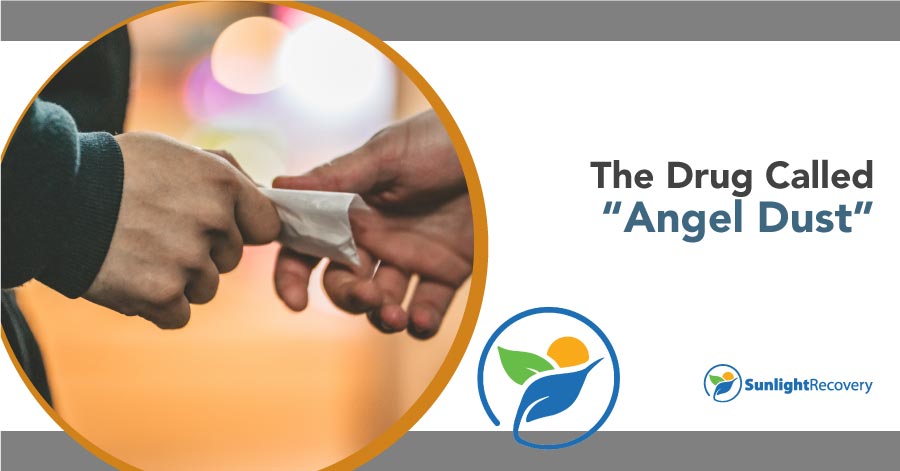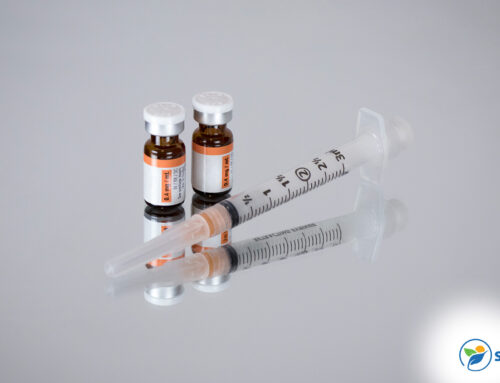The use of angel dust may have hit its peak in the late 1970s, but this drug still exists on the street today, often mixed with marijuana. But what is angel dust? It’s important to understand what it is, why it’s so addictive and what options are available to help recover from this addiction.
What Is Angel Dust?
Angel dust is the informal street name for PCP (phencyclidine). This man-made chemical was discovered in 1926 and patented in 1952 as a medical anesthetic. However, it was eventually abandoned by doctors due to its tendency to produce post-operative hallucinations. By the late 1960s, the drug had emerged as a street drug in major cities, and its recreational abuse peaked in the late 1970s.
Angel Dust in Culture
In pop culture, the angel dust drug is often depicted as causing vivid hallucinations, severe aggression and dramatically increased human strength, such as seen in the horrific dust-induced rampage of Mike in the Netflix series The Stranger.
In the news, there are sometimes stories about violent angel dust addicts requiring five police officers to subdue them. The drug has been blamed for the rapid downward spiral of former New England Patriots NFL star and convicted murderer Aaron Hernandez. Angel dust also played a major part in former reality star Steve-O hitting rock bottom in 2008.
The U.S. government estimates that 120,000 people per year consume angel dust. The average age of starting this drug is just 15 years old, and an estimated 1% of high school students consumed angel dust in the last year. While the news often focuses on overdoses due to opioids, hospitalizations caused by angel dust increased by 400% from 2005-2011.
Identifying Angel Dust
The common street name for PCP is angel dust, but it may also be referred to as boat, hog, love boat, peace pill, rocket fuel and more. When angel dust is mixed with marijuana, it may be called angel dust weed, super grass, fry, lovelies and other names.
The most common method to consume this drug is to mix it with marijuana or tobacco and smoke it. The drug can also be snorted, injected or absorbed.
Angel dust is usually produced as a pure white powder that’s then packed into pills or tablets. However, identifying angel dust can be challenging as it can easily change color when mixed or contaminated with other ingredients, and it can even be dissolved in water to appear as a clear liquid. In most forms, the drug has a distinctive, strong chemical taste.
What Is Angel Dust Made Out Of?
Angel dust starts as a laboratory chemical called piperidine, which is derived from piperine, the natural chemical that gives common black pepper its spicy taste. Piperidine is then mixed with dangerous and flammable chemicals such as bromobenzene, ether, hydrochloric acid and potassium cyanide to produce phencyclidine.
What Does Angel Dust Do?
Angel Dust is a dissociative anesthetic in the same class of drugs as ketamine and nitrous oxide, commonly used by surgeons to induce twilight or general anesthesia. These drugs work by interfering with NMDA and dopamine receptors in the brain.
When the drug is consumed, the user enters a trance-like state and feels detached from their body and the world around them. At the same time, the drug causes memory loss, pain relief and a sense of euphoria.
Negative Side Effects of Angel Dust
Unfortunately, angel dust also has negative side effects that can be severe and unpredictable, which is why doctors stopped using it as an anesthetic back in the 1960s. The immediate negative side effects that a user may experience during angel dust intoxication include:
- Very vivid hallucinations or an inability to tell what’s real
- Major anxiety, paranoia and bizarre behavior, often compared to the symptoms of schizophrenia
- Severe aggression, inability to feel pain and a false sense of strength, power and invincibility
- Loss of consciousness, seizures and coma
- Death can occur due to drug overdose but is more commonly a result of risky behavior that takes place during usage (e.g., the user suddenly thinks they can fly out a window)
Other, relatively minor side effects during angel dust use are:
- Numbness of the body
- Drooling
- Dizziness
- Slurred speech
- Loss of muscle coordination and balance
- Profuse sweating
- Rapid, involuntary eye movements or a blank stare
- Nausea and vomiting
The effects of angel dust can be felt within 5 minutes when smoked and 30 minutes when swallowed. The effects of intoxication can be felt for 4-8 hours, though some residual side effects may continue for as long as 48 hours after consumption.
Addiction to Angel Dust
Angel dust is highly addictive. Whatever traumas, hardships or mental health issues the user is running from won’t heal through drug use. As the body builds a tolerance for the drug, the user must increase the dosage in the continued pursuit of euphoria and feelings of pain-free detachment. Eventually, the user will become psychologically dependent on the drug and have an uncontrollable compulsion to continue its use.
Angel dust is a mind-altering drug, and its long-term use can cause major side effects that can take a year or longer to recover from after addiction treatment begins. These long-term side effects include:
- Debilitating anxiety, paranoia and generally bizarre, self-destructive behavior
- Loss of memories, including memories that occurred before the first drug use
- Confusion or difficulty thinking and speaking
- Depression, mood disorders and suicidal thoughts
- Social isolation
- Weight loss
- Increased blood pressure, heart rate and respiratory rate
- Liver disease
Treatment for Angel Dust Addiction
Thankfully, there are treatment options for overcoming angel dust addiction, and it’s possible to stop using the drug and go on to live a happy, productive life.
Unfortunately, detoxing off angel dust is not mentally or physically easy, and many angel dust users require the help of a medically supervised detox program. During a medical detox, doctors and nurses provide treatment that can lessen the severe withdrawal systems of angel dust, such as administering benzodiazepines to help the patient rest.
The effects of PCP can take up to a year to fully recover from, which means long-term care and follow-up will be required to ensure a relapse doesn’t occur.
A critical component of recovering from angel dust addiction is receiving treatment for whatever mental health issues and trauma are underlying the drug use. Many angel dust users are attracted to the drug because it allows them to disassociate from the mental or physical pain they’re feeling, as well as giving them a sense of invulnerability. To have long-term success after detoxing from the drug, the person must learn healthy ways to deal with their mental health problems.
Overcome Angel Dust Addiction With Sunlight Recovery
If you or a loved one are suffering from the devastating effects of angel dust addiction, expert help is available. The counselors and medical staff at Sunlight Recovery are available 24/7 to help you start the journey to long-term mental and physical wellness. Contact us now at (888) 402-3647 to learn more about our addiction recovery programs.






